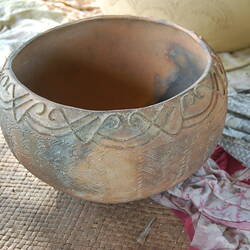World Cultures
The World Cultures Collection comprises around 5800 objects and 784 images from over 70 countries. It essentially developed in the nineteenth and early twentieth century within the context of comparative and diffusionist theories in anthropology and ethnology. Typical of museum collections of that era its composition reflects the interests and motivations of the collectors and donors. As such, the collection is an 'artefact' in itself, reflecting the methodologies, motivations and collecting practices of specific individuals. The collection also reflects the histories of: the colonial global market in ethnographic objects, museum exchange, expeditions, the establishment of colonial administrations and missions, and colonial conflicts.
Significance
The World Cultures Collection has its roots in Mechanics Institutes and the Melbourne International Exhibitions of 1880 and 1888. The collection developed primarily in the context of the comparative interests of the nineteenth and early twentieth century social evolutionists, who gave special attention to objects and technologies in the classification and ordering of societies. The tradition of amateur archaeology and collecting amongst colonial officials was also a key source of early collection material. Since the early twentieth century acquisition of new material has been limited and generally in the form of large existing collections such as Clare Reavey's Asian collection in 1979.
The significance of the World Cultures collection lies in specific sub-collections and geographically-related material. These include: the ancient Egyptian collection, the Artic collection, African collection, and the North American Woodlands collection.
